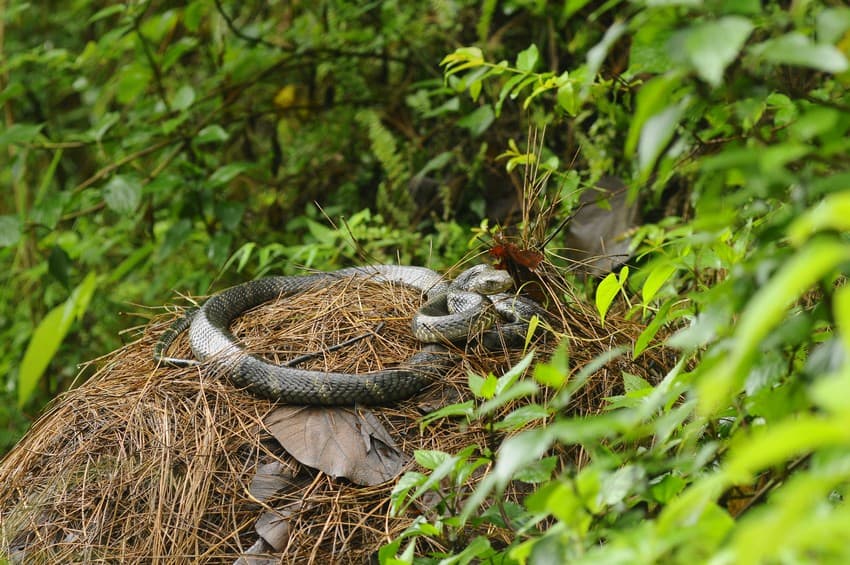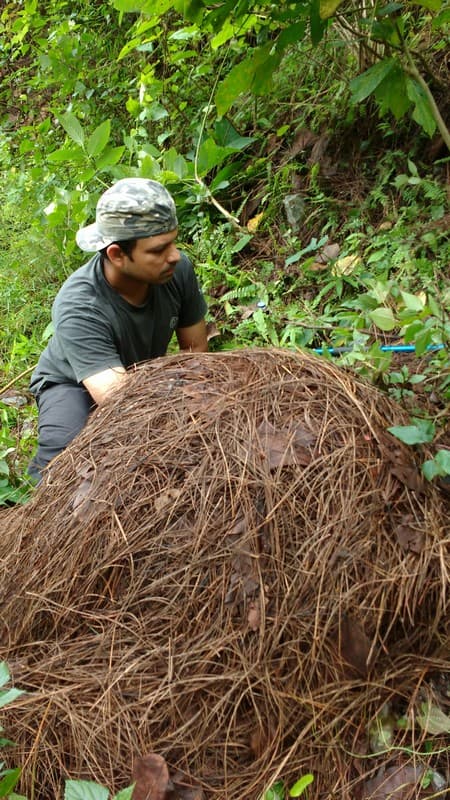Project Title
King Cobras of the Western Himalayas: Nest Ecology & Conservation

Project Grantee
Jignasu Dolia (M.Sc. Wildlife Biology & Conservation, NCBS-TIFR, Bangalore)
Q & A with the Grantee
1) Why is the focus of your project locating and studying the nest ecology of the king cobra?
Peerless among snakes, the king cobra is the only ophidian (snake) to build an above ground nest for its eggs. An apex predator, its presence indicates the health of the ecosystem it inhabits. As we have limited knowledge about its nesting ecology, especially from subtropical regions, we chose to investigate this important aspect of its biology. From a scientific perspective, we are trying to understand the proximate advantages of nest-building and gather baseline data on certain reproductive parameters (e.g. clutch size and hatching success). From a conservation perspective, we are helping boost the population of this vulnerable snake by protecting nests in situ.
2) Could you narrate an experience or two from your time working on the project that revealed aspects about the species hitherto unknown to you?
Three interesting natural history observations we made while monitoring nests come to mind. In 2017, we chanced upon a female king cobra drinking rainwater that was collecting, drop by drop, on the surface of a dry oak leaf. Although not surprising in itself, we documented this behavior, which lasted for nearly 21 minutes, for the first time in the wild. This indicated that she was indeed thirsty, but unlikely to leave her nest in search of water. The second consists of the cobra defecating on her nest prior to abandoning it, maybe to deter potential egg-predators. Then in 2019, we found two king cobra nests located unusually close to each other (< 6 m. apart), each nest being guarded by its respective owner. This finding was quite surprising and made us wonder about what really determines the choice of a nest site.
3) How much do we know about the adaptations of the king cobra in high altitudinal regions such as your project site in the Kumaon Hills of Uttarakhand?
To be honest, we know almost nothing about whether or not this snake has specific adaptations (physiological or behavioural) to survive in cool-climate subtropical regions. Based on our data on the thermal regimes of king cobra nests from mid-elevation (1,000 m. -1,600 m.) Kumaon hills, and from similar data available from Agumbe (Western Ghats), we find average nest temperatures in these two regions to be quite similar, despite stark differences in climate, habitat, topography. Radio-telemetric studies, which include tracking king cobras during winter, will help us answer some of these questions, including whether or not they hibernate during cold weather.

Images courtesy: Jignasu Dolia
